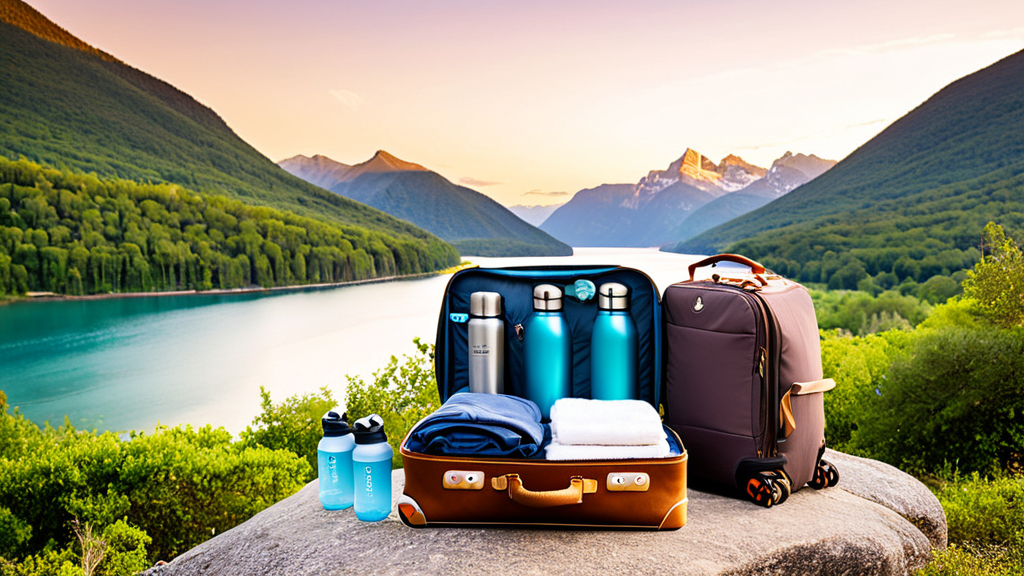Introduction
In an age where sustainability is increasingly important, packing for your travels in an eco-conscious manner can make a significant difference. Packing light not only eases your travel but also helps minimize your environmental footprint. By choosing sustainable products and adopting smart packing strategies, you can travel more responsibly and efficiently. This guide offers essential tips for packing light and eco-consciously, ensuring that your travel experience is both enjoyable and environmentally friendly.
1. Choose Sustainable Luggage
The type of luggage you use can impact your travel’s environmental footprint. Opting for eco-friendly luggage sets a positive tone for your entire trip.
Eco-Friendly Materials
- Recycled Materials: Look for luggage made from recycled plastics, organic cotton, or other sustainable materials. Brands like Away and Samsonite offer options that prioritize recycled content, reducing the need for virgin resources and minimizing waste.
- Ethically Produced: Choose luggage from companies that practice ethical production methods. Brands that adhere to fair labor practices and environmentally friendly manufacturing processes contribute positively to both the planet and global communities.
Durability and Longevity
- Quality Over Quantity: Invest in high-quality, durable luggage that can withstand multiple trips. Durable luggage reduces the need for frequent replacements, which in turn reduces waste and the environmental impact of production and disposal.
- Repairability: Opt for luggage that can be repaired rather than discarded. Some brands offer repair services or sell replacement parts, extending the life of your luggage and reducing overall waste.
2. Pack Reusable and Multi-Use Items
Minimizing waste while traveling involves packing items that serve multiple purposes and can be reused.
Reusable Containers
- Water Bottles: Bring a reusable water bottle to stay hydrated and avoid single-use plastic bottles. Many destinations offer water refill stations, making it easy to keep your bottle filled.
- Coffee Cups and Food Containers: Invest in a reusable coffee cup and food containers to reduce reliance on disposable cups and packaging. Brands like KeepCup and Stasher provide durable, eco-friendly options.
Multi-Use Clothing
- Versatile Pieces: Pack clothing items that can be layered and worn in different settings. Choose pieces that can be mixed and matched to create various outfits, reducing the number of items you need to bring.
- Performance Fabrics: Opt for clothing made from performance fabrics that wick moisture and are quick-drying. These fabrics are ideal for both casual wear and outdoor activities, offering flexibility and reducing the need for multiple garments.
3. Eco-Friendly Toiletries
Your choice of toiletries can significantly impact your environmental footprint. Opt for eco-friendly options to reduce waste and pollution.
Solid Toiletries
- Shampoo Bars and Soap Bars: Use solid shampoo bars, soap bars, and conditioner bars instead of liquid products. These items eliminate the need for plastic bottles and are often more concentrated, reducing the overall amount of product needed.
- Toothpaste Tablets: Consider toothpaste tablets as an alternative to traditional toothpaste tubes. These tablets come in recyclable or compostable packaging and are travel-friendly.
Natural and Biodegradable Products
- Chemical-Free Products: Choose toiletries that are free from harmful chemicals and artificial fragrances. Opt for natural and biodegradable products to minimize pollution and environmental impact.
- Eco-Friendly Packaging: Select products with minimal or compostable packaging. Brands like Lush and Ethique offer eco-friendly personal care products that align with sustainable practices.
4. Minimalist Packing Strategy
Adopting a minimalist approach to packing helps reduce both the physical and environmental weight of your luggage.
Essential Items Only
- Prioritize Needs: Pack only the items you truly need for your trip. Focus on multifunctional items that can serve multiple purposes, such as a versatile jacket or multi-use electronics.
- Avoid Overpacking: Overpacking leads to carrying unnecessary items that increase the weight and bulk of your luggage. Stick to essentials and items that offer the most value and functionality.
Compact and Lightweight
- Choose Lightweight Gear: Select lightweight, compact gear that takes up minimal space. Look for travel-friendly versions of your essentials, such as lightweight backpacks and collapsible items.
- Pack Efficiently: Use space-saving techniques, such as rolling clothes or using compression bags, to maximize the use of available space and reduce the overall weight of your luggage.
5. Smart Packing Techniques
Effective packing techniques can help you stay organized and make the most of your luggage space.
Rolling Clothes
- Space Efficiency: Rolling your clothes instead of folding them saves space and reduces wrinkles. This method allows you to fit more items into your suitcase and keep your clothing organized.
- Rolling Techniques: Use the rolling method for all types of clothing, including T-shirts, pants, and lightweight jackets. For delicate items, consider using packing cubes to prevent damage.
Packing Cubes
- Organize Your Gear: Packing cubes help organize your belongings and keep similar items together. They also compress your clothes, making them more manageable and easier to access.
- Ease of Access: Use different-colored packing cubes for various categories, such as clothes, toiletries, and electronics. This organization simplifies the packing process and makes it easier to locate items during your trip.
Conclusion
Packing light and right is an essential aspect of sustainable travel. By choosing eco-friendly luggage, packing reusable and multi-use items, and adopting minimalist packing strategies, you can reduce your environmental impact and enjoy a more streamlined travel experience. Embrace these eco-conscious packing tips to make your next journey not only lighter but also greener.
References
- Eco-Friendly Luggage Brands: Away, Samsonite
- Reusable Products: KeepCup, Stasher
- Natural Toiletries: Lush, Ethique






